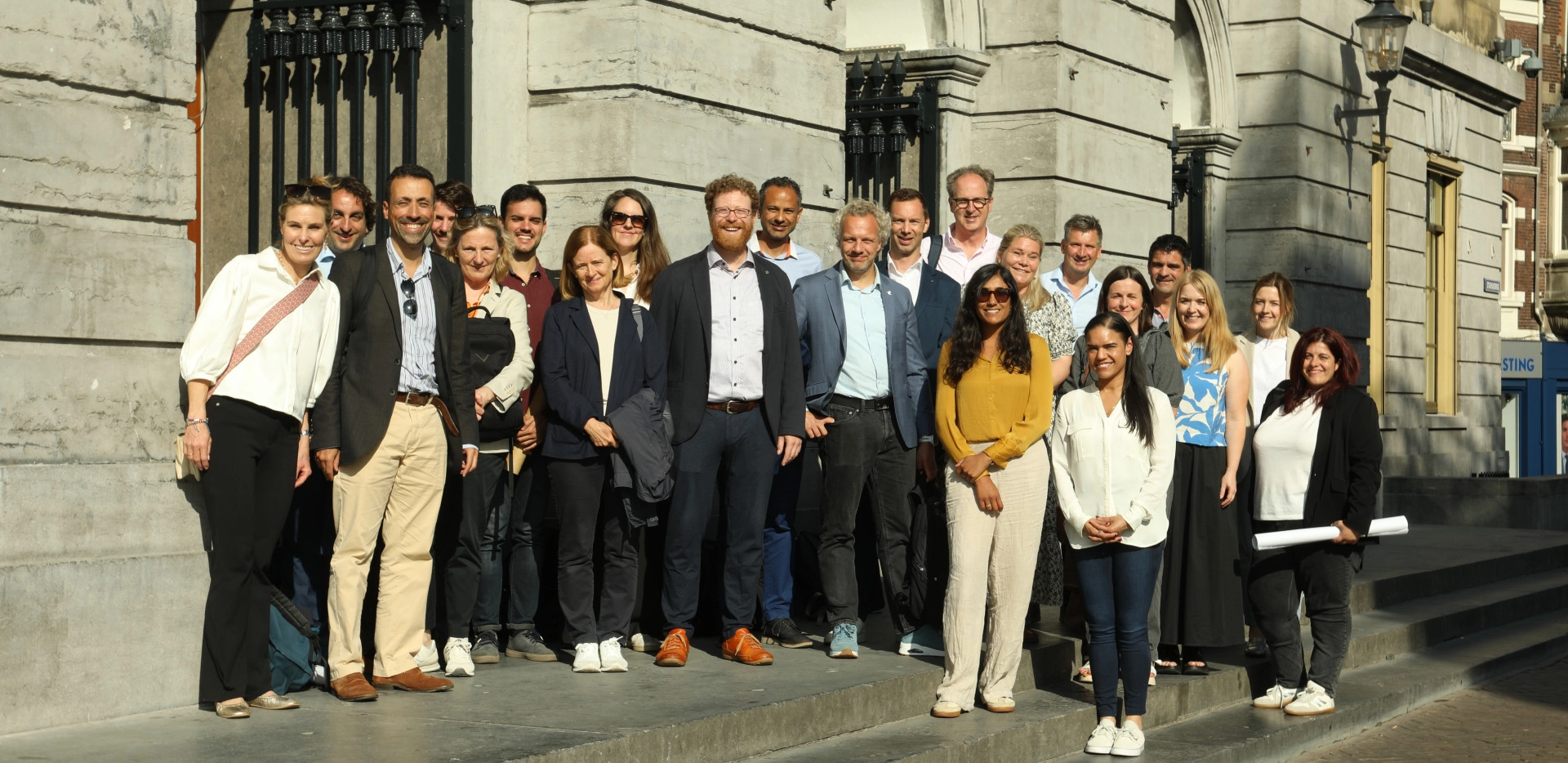
What can cities and regions learn from each other when it comes to using the CO2 Performance Ladder in tenders? That was the central question at the CityMatch on the CO2 Performance Ladder from 25 to 27 June, an event organised by the ICLEI Procura+ European sustainable procurement network in cooperation with Rijkswaterstaat and the municipalities of Haarlem and Utrecht.
Delegations from four countries visited impressive “Ladder projects” in host cities Utrecht and Haarlem, such as the A9 highway extension, which was tendered by Rijkswaterstaat. The aim was mainly to learn how (green) public procurement with the Ladder works in practice and what structural impact can be achieved in cooperating with the market.
Making impact with the Ladder in procurement
By deploying the CO2 Performance Ladder, governments have a proven and effective tool to reduce CO2 emissions through tenders. By using the Ladder as an award criterion for achieving the best price-quality ratio (BPQR), tendering parties are rewarded for their certification at a certain ambition level. This approach motivates the market to embrace innovative and sustainable solutions, including low-carbon materials, energy-efficient equipment and circular practices.
European rollout CO2 Performance Ladder
More than 300 contracting authorities in the Netherlands and Belgium now use the CO2 Performance Ladder in tenders. In recent years, the Ladder also gained a foothold in other European countries. In the meantime, tenders have been launched in six European countries and some projects using the Ladder have already been completed, including in Ireland.
CityMatch on the CO2 Performance Ladder
As the use of the Ladder is still relatively new in many countries, there is much to learn and explore. Therefore, ICLEI Europe, as a partner of SKAO, in cooperation with Procura+ members Rijkswaterstaat and the municipalities of Haarlem and Utrecht, organised an in-person event for public purchasers from partner regions and countries from 25 to 27 June: the CityMatch on the CO2 Performance Ladder. Procura+ is a network of European public authorities and regions on sustainable and innovative procurement.
Learning and experiencing by connecting
The CityMatch connected users and prospective users of the Ladder in tenders, with the aim of encouraging public buyers to implement the Ladder as part of their Green Public Procurement and zero-emission policies. Through project visits, participants of the CityMatch were able to experience what it is like to apply the CO2 Performance Ladder in practice.
The CityMatch delegations came from Northern Ireland, England, Portugal and Catalonia in Spain. The group of participants included public procurers, procurement experts, sustainability experts and decision-makers.
Day 1: reception and walk
With inspiring opening words of Utrecht Deputy Mayor Susanne Schilderman the City Match took off on Wednesday 25 June in the beautiful City Hall. Afterwards, participants enjoyed a walk along the old canals to the iconic Dom Tower, all of which were recently renovated through tenders in which the Ladder was used as an award criterion.
Day 2: visit to project A9 and Circular Raw Materials Hub
On day two, the delegations visited the A9 highway extension, a major Rijkswaterstaat (RWS) infrastructure project with a value of €845 million and a duration of seven years. What made this tender notable was that it was awarded to the Spanish company FCC Construcción, partly thanks to its level 5 certification on the CO2 Performance Ladder.
From a viaduct over the highway, RWS and FCC Construcción shared their experiences with the Ladder and their joint mission to carry out the project as sustainably as possible. In doing so, they not only demonstrated that the Ladder works internationally, but also how market parties are collaborating in innovative ways to reduce CO2 emissions, including through the use of sustainable cement and low carbon machinery and materials.
Impressive circular innovations
In the afternoon, the delegations visited the Circular Raw Materials Hub in Haarlem, a central repository for reusable building materials from construction projects. Here, Alderman Robbert Berkhout spoke about the deployment of the Ladder by the municipality of Haarlem and the partnership with market parties operating the Circular Materials Hub, such as Witteveen+Bos, Heijmans and Dura Vermeer.
Jon Jonoski of ICLEI Europe said: ‘In Haarlem, we witnessed how the Circular Hub is being used for the collection of building materials and the reuse of these materials. Particularly impressive were the many sustainable innovations in the construction of cycle paths, roads and buildings in the region that the Hub has produced.’
Day 3: looking back and concrete action plans
Friday morning was dedicated to reflection and looking ahead. Lizzie Borelan from the Strategic Investment Board Northern Ireland shared: “What I found most inspiring about the CityMatch was the opportunity to see different tools in action. It’s been wonderful to make connections and also see things that we perhaps could implement at home.”
Hady Gohar from Transport for London also looked back on the event with great appreciation: ”For me, the main benefit of the CityMatch is meeting the right people who are sharing the same aim and the same purpose.”
Continuing work back home
Finally, under the roof of Rijkswaterstaat’s headquarters in Utrecht, the parties made concrete action plans which they will now put into practice at home – using the CO2 Performance Ladder in tenders to make an impact in their country, region, sector or city, in partnership with market actors and governments.
The City Match concluded with participants writing a letter to themselves about the goals they want to achieve within a year. In six months, the group, led by ICLEI Europe, will meet again to assess everyone’s progress. Definitely, to be continued!